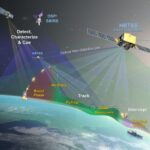
The Navy has sent a report to Congress informing lawmakers that it’s poised for the integration of the new Air Missile Defense Radar (AMDR) on the next flight of Arleigh Burke-class (DDG-51) destroyers, saying it has adequately addressed the design changes that are required to install the radar on a ship that will go under construction in fiscal 2016.The Feb. 23 report from Navy acquisition chief Sean Stackley to the House and Senate armed services committees said the Navy is…











